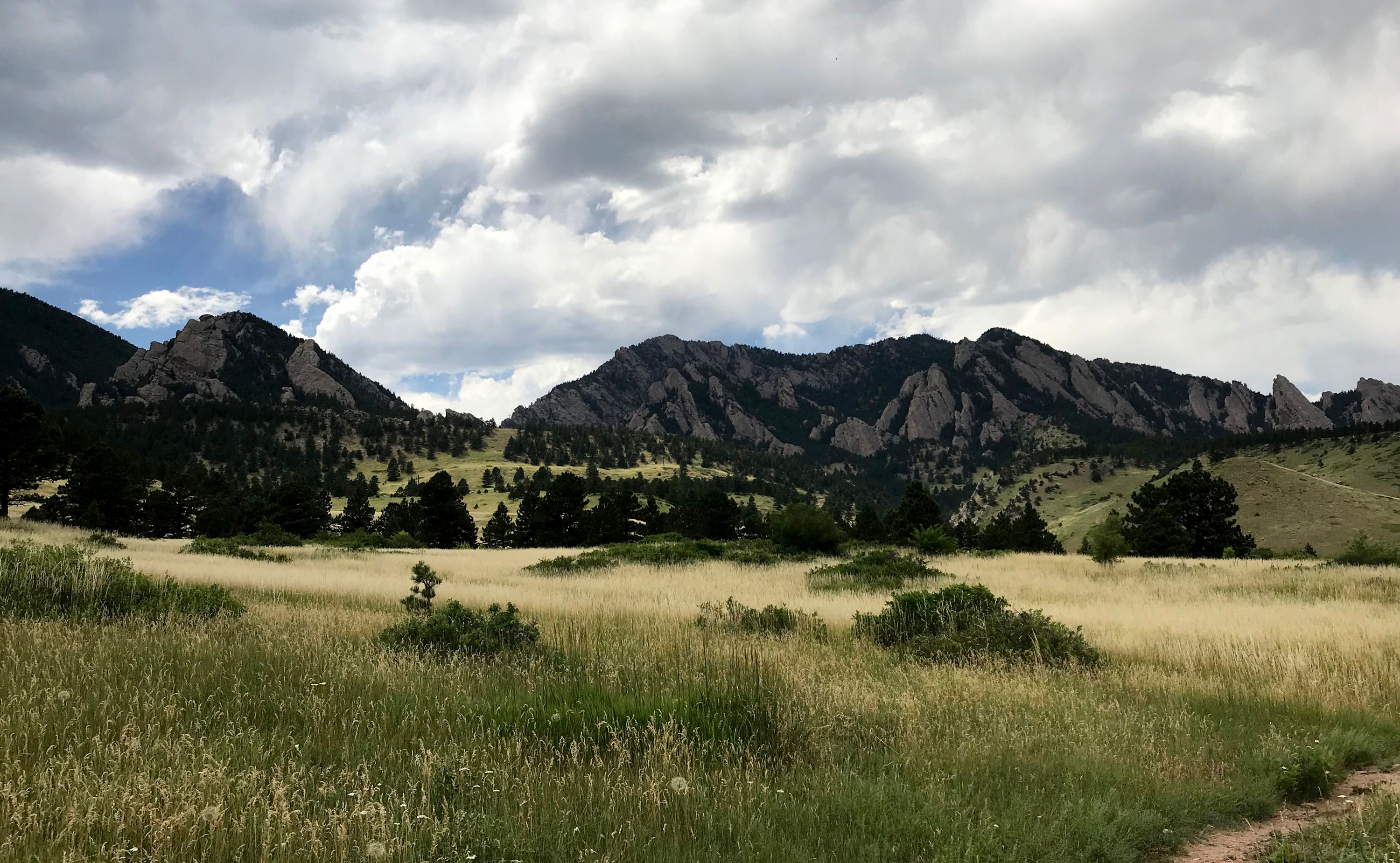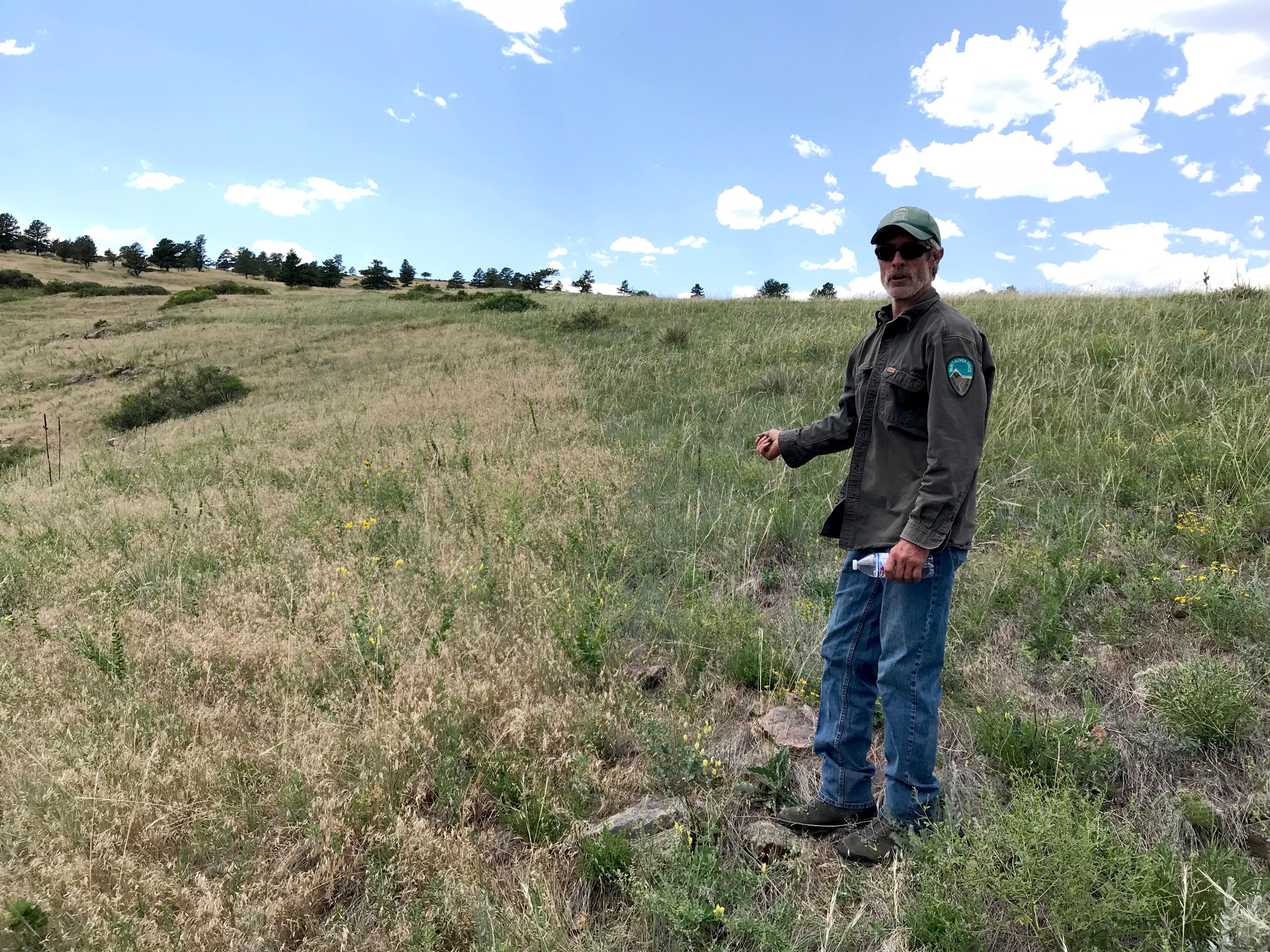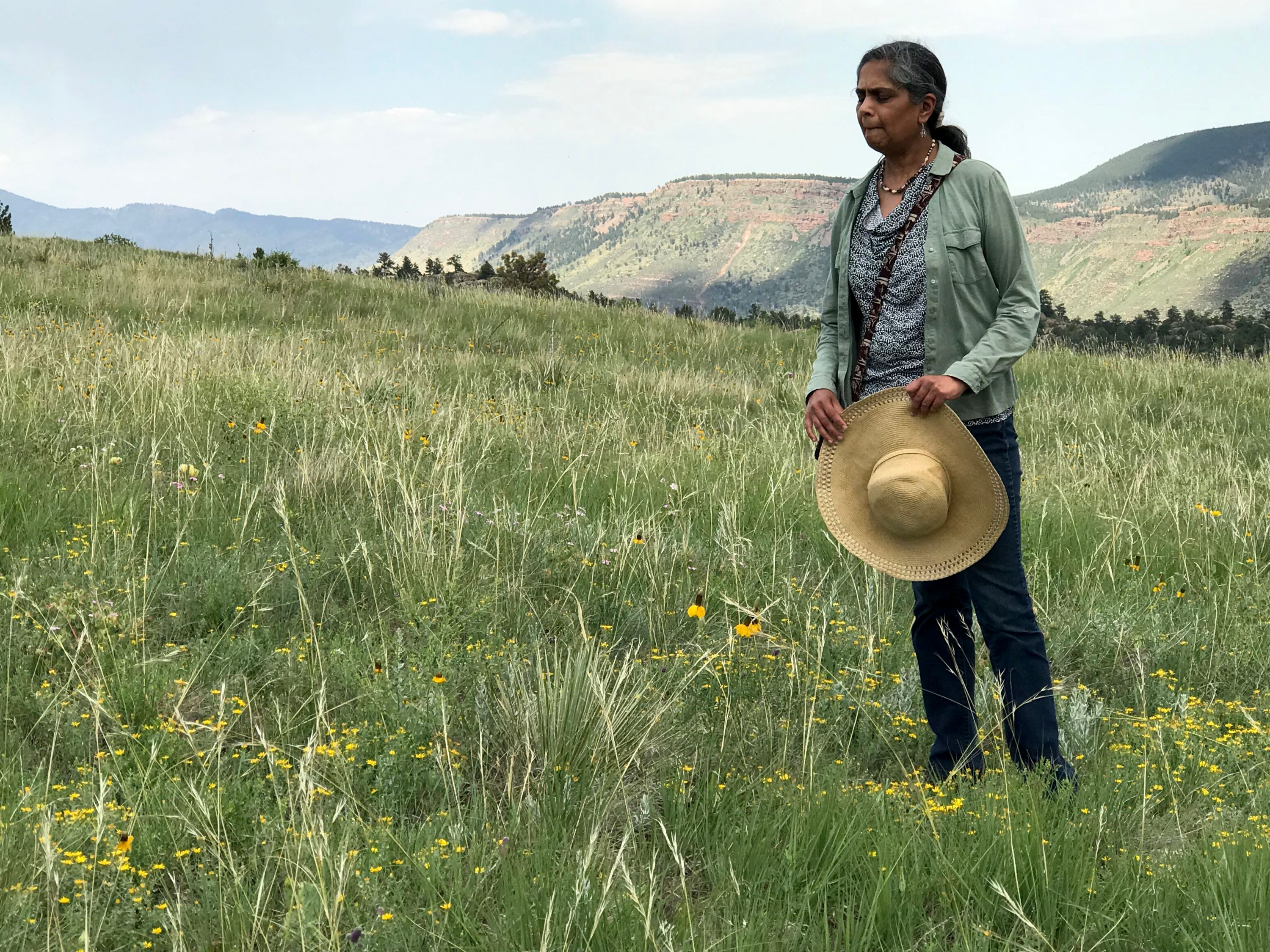IPM in Action: Boulder City and County Battle Invasive Weeds

Integrated pest management is not a one-size-fits-all approach.
Instead, IPM considers the specific pest and context to give anyone who needs to manage insects, weeds or diseases a framework for thinking through their specific situation to come up with a smart, safe and sustainable solution.
An organic grower may manage a pest differently than a conventional farmer. An exporter may use different tactics than a local seller. A city may take a different approach to managing a pest than a golf course or a homeowner or a federal agency. Each considers their own context and requirements and values and resources.
The city and county of Boulder, Colorado illustrate the concept perfectly. They each have weeds to manage on public land, but because their goals, weeds, acreage and approaches differ, their management differs. Here’s what it looks like.
Boulder City
The City of Boulder’s Open Space and Mountain Parks Department manages 45,000 acres of publicly owned land surrounding the community. Some of it is forested, some farmed. From alpine terrain west of Boulder to prairie grasslands to the east, it’s a diverse, unique and valuable resource.
“We have some of the most intact tall grass prairie left in the country and it holds a variety of endangered and rare species,” explained Laurie Deiter, the vegetation management coordinator for the department. “But an invasive species, tall oatgrass, is threatening a huge part of the ecological edge between the forest and the grasslands.”

Tall oatgrass, a European native pasture grass, germinates in the fall (and Boulder’s late summer rains encourage it) then shoots up in the spring. By early summer, the grass is four feet high or higher, drying out and shedding seed. As the tall grass dies back it forms a dense thatch that blocks out the light for the later-growing native species.
And those natives are rare. The ecological areas threatened by tall oatgrass are known as xeric tallgrass prairie and mesic bluestem prairie, featuring both tall and little bluestem grasses.
Outside Boulder, these are found at the base of the Flatirons – the iconic rock formation above town.
“It’s so rocky that nobody tilled it,” Deiter said. “They had to use it for grazing, which is why it’s still intact today.”
“It’s a boutique grassland and we never thought we had to worry about it,” added Brian Anacker, the department’s science officer. “Then tall oatgrass comes along and said ‘I can work here.’”

The invasive grass has spread across 300 acres, threatens 1,500 more and dominates the landscape along several popular trails that lead up to the Flatirons. Boulder has the resources to manage an outbreak of that size, but limitations on its management options.
“We have fairly strict pesticide regulations in Boulder,” Deiter explained. “So no glyphosate. Envoy (clethodim) is the only herbicide we feel is safe enough, and even then we only use any herbicide in small areas.”
Because tall oatgrass seeds are only viable in the soil for a couple of years, the city is experimenting with a couple of management strategies. Crews have whipped down stands of tall oatgrass in the spring, leaving the thatch on the ground, which shows promise as a management strategy in small areas.
Cows may be the answer for wide-area control.
“In 2015, we created a 72-acre enclosure to test grazing as a management tool,” Anacker said. “Cattle are grazed in the spring for four or five weeks, and you can see the effects on the landscape.”
Visually, the effects are dramatic. The grazed side of the fence is green and low, the non-grazed side brown and high.
“We’re really optimistic that the grazing is working well,” Anacker said. “We’re not seeing native species rebound in numbers yet, but what we think is our native plant community is relatively slow to respond compared to non-native invasives like tall oatgrass. We’re expecting the response to take longer.”
If natives do make a comeback in the grazed areas, Boulder hikers can expect to see a few more gates across trails in the future as more parcels are grazed.
“As land managers, we’re worried about the ecological impacts of this species on both our native plant communities, and other species likes pollinators and birds,” Anacker said. “These are part of the natural heritage of Boulder, and we want to preserve them as best we can.”
Boulder County

Boulder County also wants to manage its natural resources and heritage, and preserve its open spaces for native pollinators, game species and birds.
Its weed district is mandated by the state to eliminate, contain or suppress a host of noxious weeds – 71 listed species in all. It has 40,000 acres and 685 miles of roadway to tend, which it does by mowing, hand pulling, tilling, planting desirable vegetation, releasing bio-control insects and applying herbicides.
“Boulder County citizens have entrusted us to be good stewards of the land,” said county Weed Coordinator Steve Sauer. “We’re trying to get our native grasses and forbs to grow and not be outcompeted by downy brome, and this year there’s a definite fire-control aspect to our work because it’s so dry.”
Downy brome, also known as cheatgrass, is a winter annual grass that’s a major problem in Boulder County and much of the West. Like other invasive annuals like medusahead and ventenata, downy brome forms dense monoculture stands, outcompetes natives and creates a rich fuel source for wildfire.
And like tall oatgrass, downy brome seeds stay viable in the soil for three or four seasons, so controlling them for that multi-year period is necessary to give natives the opportunity to rebound.
One tool the county uses to get that control is the herbicide indaziflam, or Esplanade 200 SC, which underwent some early product testing in Boulder County. It’s a pre-emergent, broad spectrum herbicide that controls grasses and broadleaf weeds, and Sauer and his crews are seeing promising results.
“We’ve sprayed a little over 1,000 acres total, and there are thousands more we could treat,” Sauer said. “We’re prioritizing the higher value areas and the county’s been very supportive.”

County Noxious Weed Specialist Jim Sebastian made many of those applications, and led Sauer and Colorado State University pollination and plant reproduction specialist Arathi Seshadri on a tour of some of those sites earlier this summer.
What they saw, two years after application, was a clear line in the vegetation where the herbicide had been applied. Cheatgrass was thick in the untreated areas and sparse in the treated.
“In the past, we could get this control for a year then the downy brome would come back and you’d have to treat again,” Sebastian said. “If we’re able to manage it for three or four years with one application, the seed bank will be depleted and the natives can come back.”
Seshadri is studying what happens in the treated areas, looking specifically at the abundance and diversity of floral resources and the abundance and activity of native pollinators.
“We’re seeing a lot more pollinator activity in the treated plots,” she said. “We’re seeing an increase in the number of stems per plant and the number of flowers per plant. We’re also going to compare the number of pollen grains, but counting them is a winter activity.”

Because Esplanade has a long residual and broad-spectrum activity, there are precautions for using it, said Harry Quicke, the western region vegetation stewardship and development manager for Bayer, which developed the product.
“There have to be perennials remaining in the treated area or you end up with bare ground,” he said. “Areas that are degraded to the point where desirable perennials have been eliminated by annual grasses will need more extensive restoration. And every application will need monitoring, because the invasive grasses may eventually come back from where they come from originally.”
Bayer has published a stewardship guide for the product.
Right now, the city’s grazing and the county’s herbicide applications both show promise, but both need further study and monitoring (which is a part of any good IPM program). The goal for both the city and county is the same – areawide control of invasive weeds and protection of valued native species and natural resources – but the paths they’re taking to get there differ because their circumstances, resources and limitations differ.
It’s IPM in action.